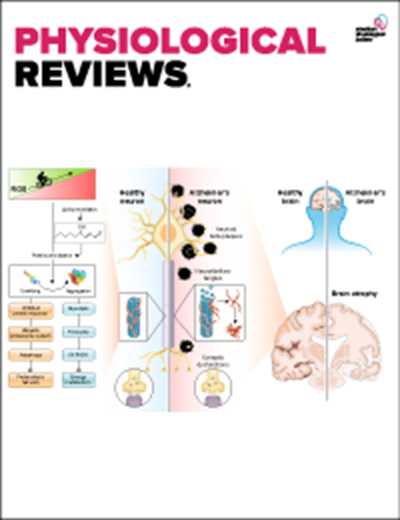The SLC-ome of membrane transport: From molecular discovery to physiology and clinical applications.
IF 28.7
1区 医学
Q1 PHYSIOLOGY
引用次数: 0
Abstract
Membrane transporters are essential for human health, mediating the movement of nutrients, electrolytes, metabolites and other molecules across cellular and organellar membranes. Genes encoding these proteins account for approximately 5.2% of the human protein coding genome. Nearly half of these belong to the solute carriers (SLC) supergroup, the largest class of membrane transport proteins, collectively termed the "SLC-ome." The current SLC-ome comprises 464 SLCs organized into 76 SLC families, of which 24% (111 SLCs) remain orphan transporters with unknown or incompletely characterized function. An additional 52 SLC-like proteins bring the total to 516 membrane transport proteins. SLCs function as molecular gatekeepers, and their dysfunction contributes to a wide spectrum of human diseases, including cancer, diabetes, and immunological, cardiovascular and neurodegenerative disorders. Pathological consequences of SLC defects include hypertension, hyperglycemia, hypercholesterolemia, nutritional deficiencies, metal ion imbalance, oxidative stress, and dysfunction of mitochondria, lysosomes, endoplasmic reticulum and Golgi apparatus. In addition, genetic defects in SLCs are the cause of many rare diseases. Several SLCs require additional subunits to form functional heteromeric complexes, while others exhibit additional or alternative roles, such as acting as transceptors. In this review, we provide updated physiological, structural, mechanistic, and pharmacological insights for each of the 516 human SLC and SLC-like proteins. We also summarize their classification, structural architecture, transport mechanisms and pharmaceutical relevance, and present the most recent SLC gene nomenclature assignments approved by the HUGO Gene Nomenclature Committee (HGNC).膜转运的SLC-ome:从分子发现到生理学和临床应用。
膜转运蛋白对人体健康至关重要,介导营养物质、电解质、代谢物和其他分子在细胞膜和细胞器膜上的运动。编码这些蛋白质的基因约占人类蛋白质编码基因组的5.2%。其中近一半属于溶质载体(SLC)超群,这是最大的一类膜转运蛋白,统称为“SLC-ome”。目前的SLC-ome包括464个SLC,分为76个SLC家族,其中24%(111个)仍然是孤儿转运蛋白,功能未知或不完全表征。另外52种slc样蛋白使膜运输蛋白总数达到516种。SLCs起着分子看门人的作用,其功能障碍与多种人类疾病有关,包括癌症、糖尿病、免疫、心血管和神经退行性疾病。SLC缺陷的病理后果包括高血压、高血糖、高胆固醇血症、营养缺乏、金属离子失衡、氧化应激以及线粒体、溶酶体、内质网和高尔基体功能障碍。此外,SLCs的遗传缺陷是许多罕见疾病的原因。一些slc需要额外的亚基来形成功能性的异质复合物,而其他slc则表现出额外或替代的作用,例如作为受体。在这篇综述中,我们提供了516种人类SLC和SLC样蛋白的最新生理、结构、机制和药理学见解。我们还总结了SLC基因的分类、结构结构、转运机制和药物相关性,并介绍了HUGO基因命名委员会(HGNC)批准的最新SLC基因命名。
本文章由计算机程序翻译,如有差异,请以英文原文为准。
求助全文
约1分钟内获得全文
求助全文
来源期刊

Physiological reviews
医学-生理学
CiteScore
56.50
自引率
0.90%
发文量
53
期刊介绍:
Physiological Reviews is a highly regarded journal that covers timely issues in physiological and biomedical sciences. It is targeted towards physiologists, neuroscientists, cell biologists, biophysicists, and clinicians with a special interest in pathophysiology. The journal has an ISSN of 0031-9333 for print and 1522-1210 for online versions. It has a unique publishing frequency where articles are published individually, but regular quarterly issues are also released in January, April, July, and October. The articles in this journal provide state-of-the-art and comprehensive coverage of various topics. They are valuable for teaching and research purposes as they offer interesting and clearly written updates on important new developments. Physiological Reviews holds a prominent position in the scientific community and consistently ranks as the most impactful journal in the field of physiology.
 求助内容:
求助内容: 应助结果提醒方式:
应助结果提醒方式:


